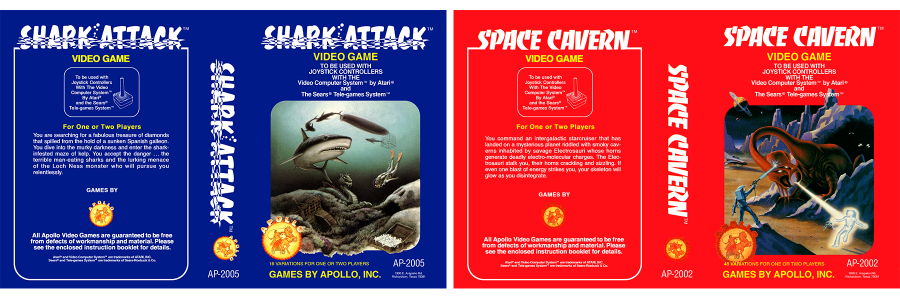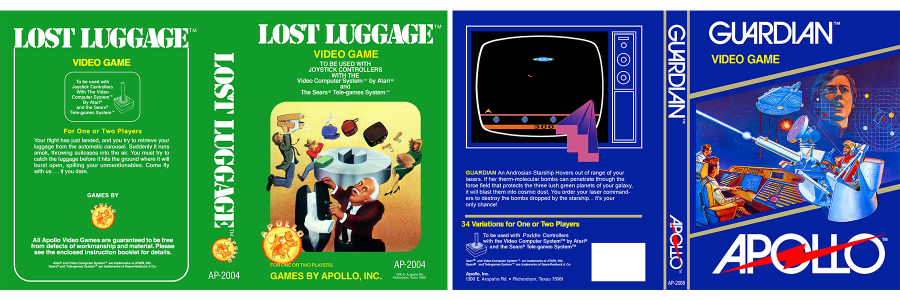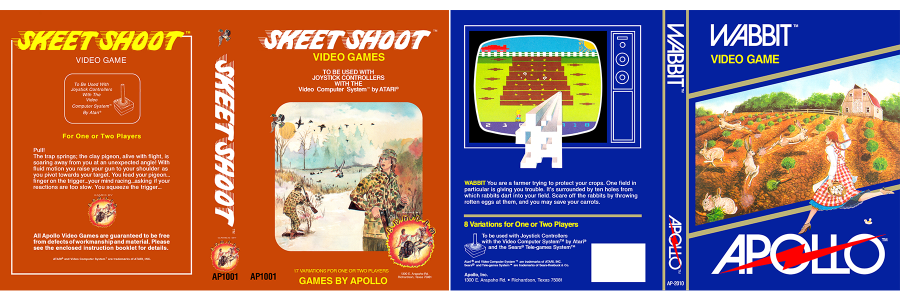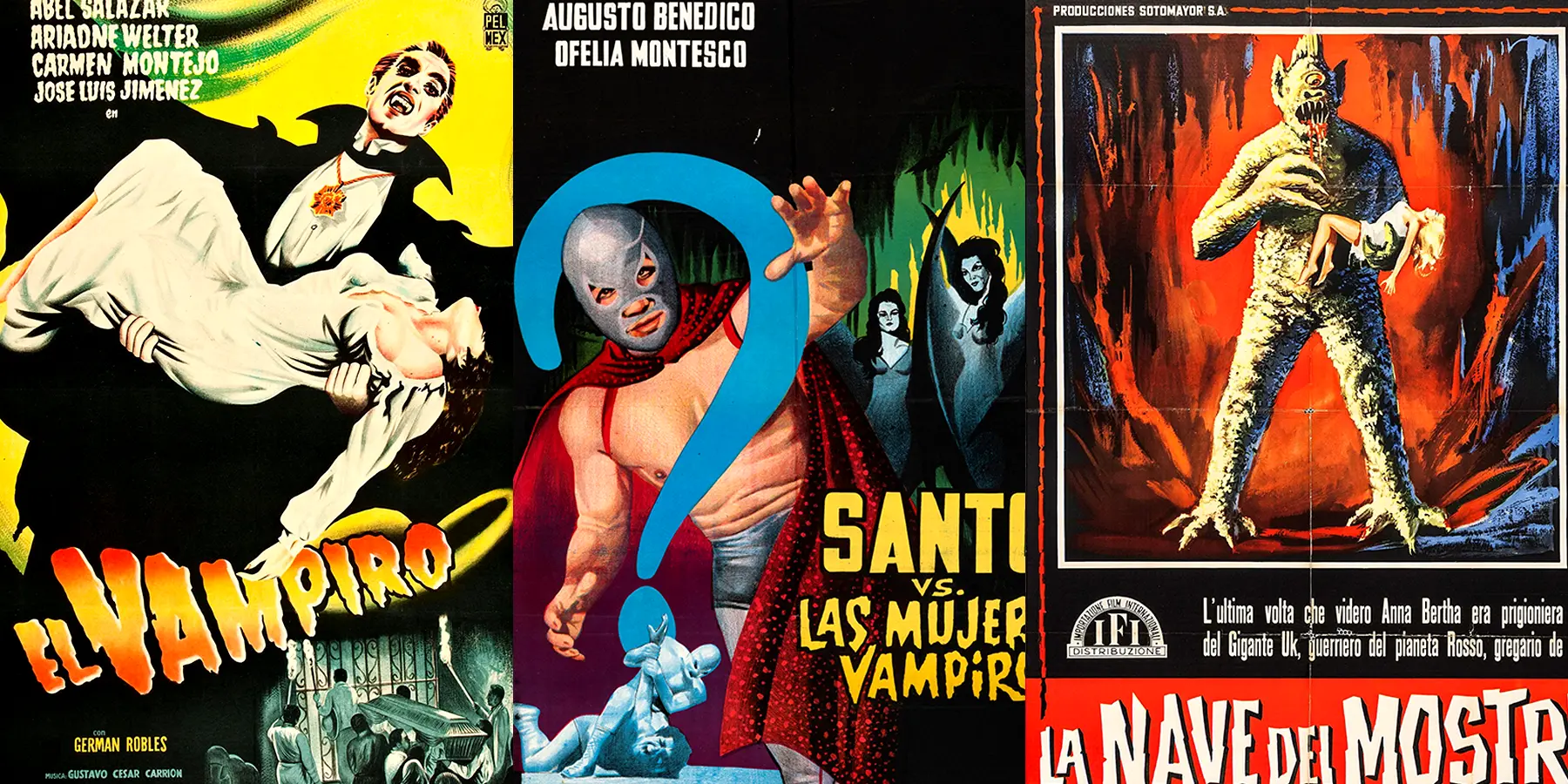Apollo, a third-party video game developer for the Atari 2600, emerged during the early 1980s video game boom. Known for its rapid rise and equally rapid collapse, Apollo left an indelible mark on the industry. From its innovative games to its controversial legal troubles, the company’s short-lived history reflects both the promise and pitfalls of the golden age of gaming.
A Brief History of Apollo
- Founded: 1981, in Richardson, Texas, by former businessman Pat Roper.
- Mission: Apollo was one of the first third-party developers for the Atari 2600, joining the likes of Activision in an effort to tap into the burgeoning home console market.
- Initial Success: Apollo initially sought to capitalize on the popularity of the Atari 2600 with a mix of action, sports, and arcade-style games.

Apollo’s Game Library: Titles and Synopses
Apollo released a modest library of games, many of which were notable for their creativity, if not their commercial success. Here’s a complete list of Apollo’s known titles:
- Space Cavern (1982)
- Synopsis: A shooter game where players defend against alien invaders in a series of caverns, using a laser gun to survive waves of enemies.
- Reception: One of Apollo’s more popular titles, praised for its fast-paced action.
- Skeet Shoot (1981)
- Synopsis: A simple sports simulation where players shoot clay pigeons in a skeet-shooting competition.
- Reception: Criticized for poor graphics and gameplay mechanics, it is often cited as one of the Atari 2600’s worst games.
- Loch Jaw (1982)
- Synopsis: A maze game where players evade a shark while recovering treasure from underwater caverns.
- Controversy: The game was pulled from shelves due to legal threats from Universal Pictures, which claimed it infringed on the Jaws copyright.
- Solution: Apollo renamed the game to Shark Attack and altered minor aspects of the gameplay.
- Lost Luggage (1982)
- Synopsis: Players act as baggage handlers trying to catch falling luggage before it hits the ground.
- Reception: A quirky and unique game, though it received mixed reviews for its simplistic gameplay.
- Guardian (1982)
- Synopsis: A space shooter where players protect a colony from invading alien forces.
- Reception: Not widely remembered, but it offered decent gameplay for its time.
- Wabbit (1982)
- Synopsis: One of the first games with a female protagonist, players control a farmer trying to protect her carrots from invading rabbits.
- Reception: Notable for its novelty, but ultimately a niche release.

Unreleased and Prototype Games
Several Apollo projects were in development when the company went bankrupt, though few concrete details about these games exist. Rumors persist about unreleased prototypes, but no confirmed titles have surfaced.
Apollo Hits and Legacy
- Hits: Space Cavern is the closest Apollo had to a commercial success, earning praise for its replayability and challenge.
- Legacy: Apollo’s games are remembered as early examples of third-party creativity. Titles like Wabbit and Space Cavern stand out for their innovation, despite Apollo’s struggles with quality and consistency.

The Loch Jaw Controversy
One of Apollo’s most infamous moments was the legal trouble surrounding Loch Jaw. Universal Pictures argued the game was an unauthorized adaptation of the film Jaws. Apollo quickly responded by:
- Pulling the Game: To avoid costly litigation, Apollo ceased distribution of Loch Jaw.
- Renaming It: The game was rebranded as Shark Attack and re-released with minor changes, avoiding direct association with the movie.
The Rise and Fall of Apollo
Rise
- Timing: Apollo entered the market at the height of the Atari 2600’s popularity, riding the wave of consumer demand for new games.
- Third-Party Model: Following Activision’s lead, Apollo sought to capitalize on Atari’s lack of first-party exclusivity by developing and marketing its own titles.
Fall
- Oversaturation: The video game market became overcrowded with low-quality titles, including many from Apollo, contributing to consumer distrust.
- Financial Troubles: Poor sales and high production costs led to Apollo filing for bankruptcy in late 1982, just a year after its founding.
- Lack of Hits: Apollo’s games, while occasionally innovative, failed to achieve the critical or commercial success needed to sustain the company.

Contribution to Video Game History
Apollo’s story highlights the risks and rewards of early third-party game development. While it lacked the polish of Activision, Apollo demonstrated the potential for smaller developers to innovate in a market dominated by large companies like Atari. The legal issues surrounding Loch Jaw also set an early precedent for intellectual property disputes in the gaming industry.
Artists and Cover Art
The identities of Apollo’s cover artists remain largely unknown, as the company rarely credited its contributors. However, the bold, colorful box art for games like Space Cavern and Wabbit remains a nostalgic hallmark of early gaming history.
Conclusion
Apollo Video Games may have had a brief and tumultuous existence, but its legacy endures as a cautionary tale from the golden age of gaming. From the creativity of Space Cavern and Wabbit to the legal drama of Loch Jaw, Apollo’s story is one of ambition, missteps, and the chaotic energy that defined the early 1980s video game industry. Today, collectors and enthusiasts keep Apollo’s memory alive, celebrating its unique contributions to Atari’s legacy.




